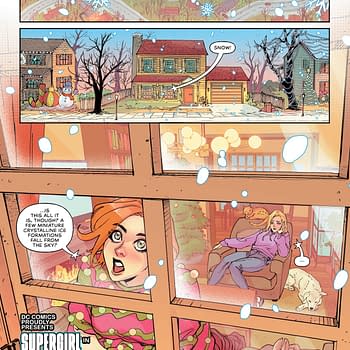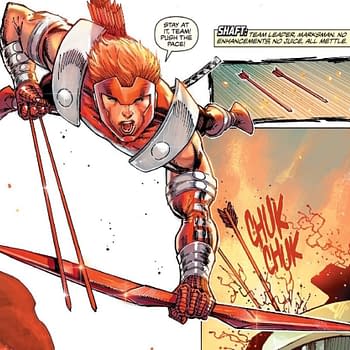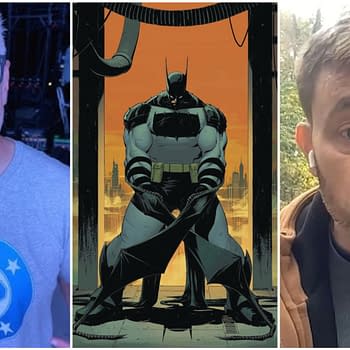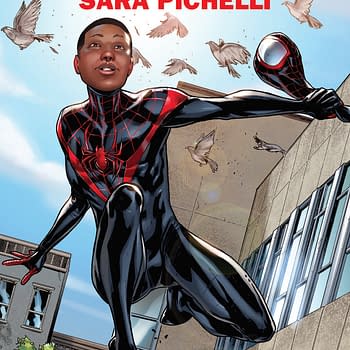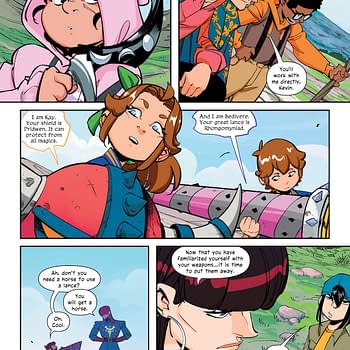Posted in: Comics, Recent Updates | Tagged: Andrea Tsurumi, Comics, comixology, entertainment, Fabian Rangel Jr., Juan Romero, Los Muertos, Moth City, Rachel Deering, The Reservoir, Tim Gibson, Zootrope
Spotlight On ComiXology Submit – Zootrope, The Reservoir, Los Muertos
Every week, there is quite a selection of new comics available that have been added to ComiXology via their creator-owned Submit platform, and here at Bleeding Cool we're taking a moment to point out some of the titles that have caught our attention this time around that you might find as wacky or as intriguing as we did.
Top Pick:
Zootrope, written and illustrated by Andrea Tsurumi
I recall seeing a print copy of this wild and fantastical book awhile back, and in the meantime Andrea Tsurumi has been plenty busy with new creations drawn from her teeming brain, but seeing it available digitally was a moment of realizing all is right with the world. This story, which is suitable for all ages (9 plus), but certainly isn't one that adults should miss out on, features an animal-based theater troop in the strange world of their performance and backstage experiences. Seeing it in digital was a bit of a revelation as I realized the role that light plays in digital comics. The hand-drawn feel of the comic might have seemed initially like something that might not translate well to the screen, but I was quite mistaken.
Because the illustrated/comic (it's a fine line) book deals in light, with ligh tbulbs and shadows featured heavily, the yellows and blues of the drawings really jump off the screen and create a new experience even beyond a print version of the same work. The book is vivid and moves in sinuous ways that play out very well on a large or zoomed in digital surface screen. Here you can see Tsurumi's softly shaded line-work and appreciate even more fully the graceful execution of the dance motifs as her animal characters move through their open-panel narrative. You can also appreciate the detail more fully in her multi-scene pages and pick out the humor in individual movements and facial expressions fully. If digital highlights the strengths of artwork, Zootrope (there's actually an umlaut over the second "o" but my computer doesn't seem to want to reproduce it properly) is a work that can stand up to any scrutiny and leave you appreciating the fine-art aspects of storytelling. This is exactly the kind of book that should appear through ComiXology submit—granting the reader even greater access to a highly original and fascinatingly imaginative world.
You might also like:
The Reservoir (Moth City Preludes #1), written and illustrated by Tim Gibson
I noticed right away that The Reservoir, by Tim Gibson, takes advantage of the horizontal format possible on ComiXology in a unique way, introducing a panoramic feel and a control over "reveals" panel by panel, highlighting the diversity possible in digital presentation methods for comics. It's a Western in "black and white" and frequently has a wood-cut feel to its stark, heavy, but contained inking. The inter-cutting of fairly somber and epic-toned narrative panels gives the comic a silent film feel regarding the hardships of the western frontier and covered wagon travel heading west and the use of illustrative silent panels capturing "moments" in Western life reinforces that kind of steady transit sensation for the reader. This first issue focuses on snapshots of life for those breaking the wilderness, but also highlights in text and image the powerlessness people experience in the face of the natural world as they assert their "will" and the motif of a pregnancy and birth on the frontier are very suited to pursue that theme. The story that it tells is stark, and keeps explanation broad and universal while depicting close-up events from the life of its most significant character and his daughter, exploring his family life and what is his "origin story" which acts as a prelude to Gibson's graphic novel Moth City (chapter 1 of which is currently available for free on ComiXology).
Though I'm not yet familiar with Moth City's central ideas, I can grasp where things are headed after reading this "mini-comic" and for those who are already in the know about Moth City, this must be an eye-opening processions of very insightful observations about the making of a man and his motives in life. It's clear that Gibson has a strong sense of the novel-like capabilities of comics to tell in-depth character stories and also to create a visual world that can convey attitudes and experiences necessary to understanding characters; in this case landscape and material life play a big part in helping you experience the world of the characters. Reading The Reservoir is a substantial introduction to a world that's epic, mean, gritty, and very human, and it may well be the starting point of a Moth City journey for many readers.
Los Muertos, written Fabian Rangel Jr., with art by Juan Romero and lettering by Rachel Deering, published by Believe in Comics
I'm familiar with Rangel Jr.'s work on Doc Unknown, a pulp noir series, and I also know that his imprint Believe in Comics, has found a highly-functional path into the hands of readers via Kickstarter and ComiXology in the past, so I'm pleased to see a team-up between Rangel and a former collaborating artist Juan Romero. What I didn't quite expect was such a radical departure in genre from my previous reads and also the fact that this is essentially a small graphic novel packed into what readers might at first expect to be a single issue. It's quite a value, honestly for the amount of content in the story. And the genre: well, it's a highly-charged revenge tale drawing in folk-tale and Mexican traditions regarding death and the occult. And it is incredibly readable. I'll give props first to Romero's artwork, from his opening scene which highlighted interesting color choices, to his sparky reveal of character design for his revenger, Carlos, once he transforms into something of an angel of death. The storyline is simple, but not simplistic, since it has a universal appeal that speaks to resonant themes about violence, love, and the potential for a person to become sucked into the "darkness" inspired by painful experiences in an unforgiving world, in this case, the bloody struggles and rivalries of druglords in a town on the Texas/Mexico border.
Romero's artwork seems aware of the universality of what its conveying while remaining committed to the vulnerability of its character depictions and also handles action scenes very well with an eye toward panel layout and well-paced design. It's the kind of comic you might expect to turn up serialized in a genre-themed anthology, but instead you get a compact, satisfying read, which is part of the appeal of delving into creator-owned comics like this one. Like some of the best comics from mid-sized publishers, the writing and art show a degree of skill and understanding of the mechanics of comics that enable them to present a balance between the narrative and art design that leave you wanting more—and it's fair to say that after reading this, you'll find yourself wanting a few more pages of Carlos the avenger in action, even if you're happy with the resolution that the story offers. It wouldn't surprise me in the least if the Believe in Comics imprint becomes a much bigger publishing personality someday if it keeps on along the lines established in Doc Unknown and Los Muertos. Either way, Los Muertos is, in fact, a read that will remind you why you believe in comics in the first place.
Hannah Means-Shannon is EIC at Bleeding Cool and @hannahmenzies on Twitter













